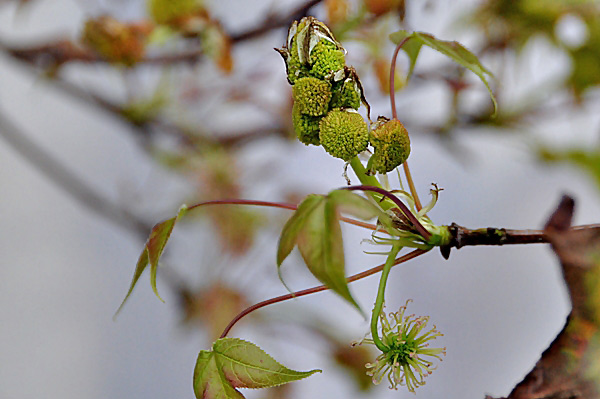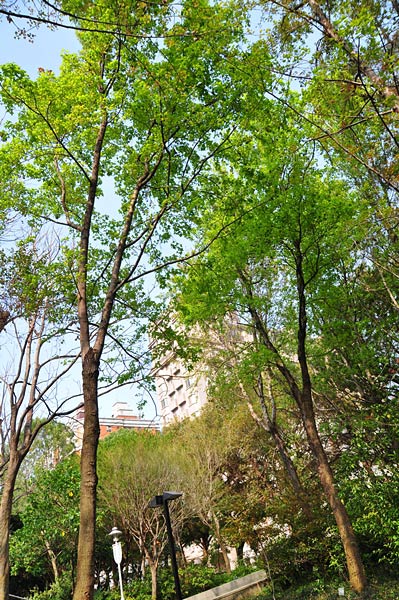Liquidambar formosana
The Formosan sweet gum is a deciduous and dioecious tree, with flowers appearing alongside new leaves annually, adding vitality to the natural environment. This plant has garnered widespread attention due to its unique morphology and diverse uses. Its Chinese name derives from the resemblance of its leaves to those of a maple tree. However, when the leaves are rubbed between the hands, a distinctive fragrance can be detected. Some also suggest that the fragrance originates from the sap. In fact, many parts of this plant possess unique odors.
When the bark of the Formosan sweet gum is damaged, it exudes an amber-colored sap. This sap, when collected and dried, can be used as a medicinal material. The fruits are also believed to have therapeutic properties, making this plant of significant medicinal value in traditional Chinese medicine. In terms of wood, Formosan sweet gum is known for its hardness and durability, particularly its resistance to termites, making it an excellent material for construction and furniture making. Additionally, the wood can be used for cultivating mushrooms, providing further economic value to agriculture and forestry, which is why it was once widely planted for afforestation. Its leaves also have practical value, as they can be used to feed giant silkworms, and the silk produced by giant silkworms can be utilized in the textile industry, further expanding the application of Formosan sweet gum in both agricultural and industrial sectors.
Formosan sweet gum is distributed globally in China and Taiwan. In Taiwan, they are primarily found in areas below 1,500 meters above sea level. Due to its majestic form and beautiful changing leaves, they are widely cultivated as ornamental trees in parks and green spaces from lowland to mid-elevation regions in Taiwan. The museum primarily cultivates them at the foot of circular hill area of the Central Lowland Area of the Botanical Garden. From late December to around February each year, they create a beautiful foliage color display. Additionally, they are also planted in the herb garden of the Human Cultures Hall.

